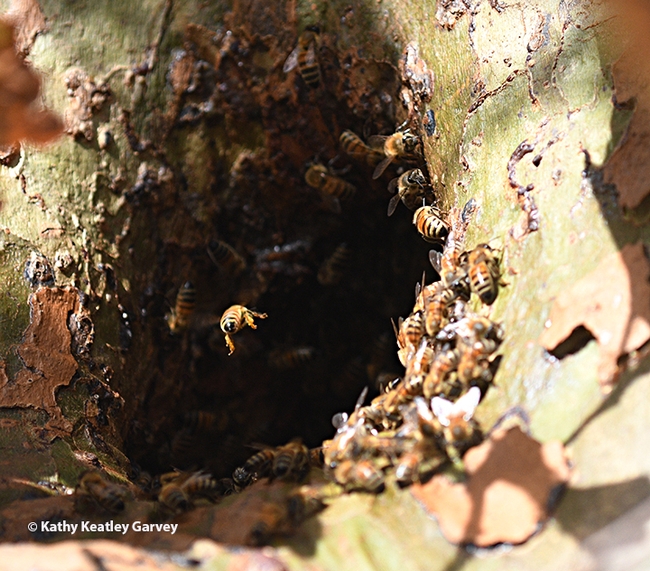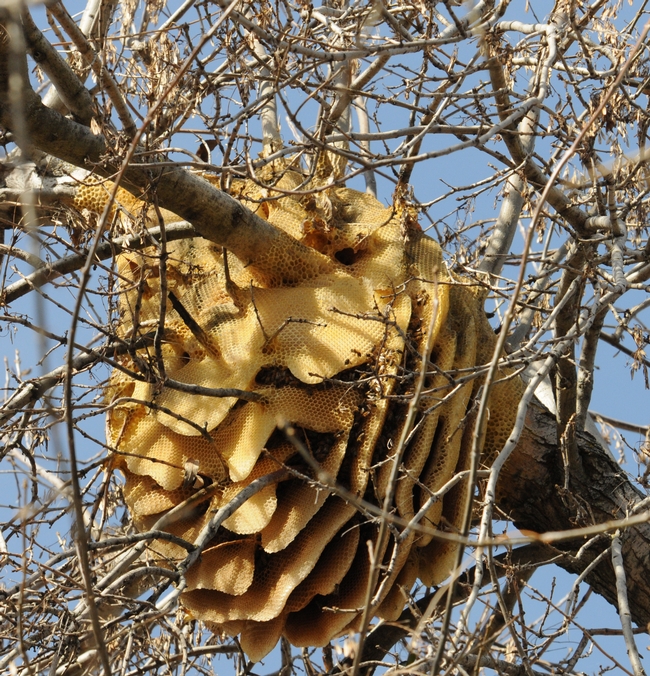
Picture this: George Washington (Feb. 22, 1732-Dec. 14, 1799) is eating hoecakes with honey, and adding honey to his tea, something that historians say he did every day.
Historians also relate that Washington not only loved honey, but he kept bees at his Mount Vernon estate to pollinate the fruits and vegetables. He was among the first to keep his bees in wooden boxes "as opposed to the traditional black gum hives," according to the Presidential History of Honey Bees.
Washington described his bee hives as "bee houses." On July 28, 1782, Washington gave "300 nails at the Circle Storehouse to an indentured English joiner named Matthew Baldridge, to make a bee house," according to George Washington: Bee Keeper.
As Apis mellifera enthusiasts know, European colonists brought the first honey bees to America in 1622 to the Jamestown colony, Virginia. They kept the bees in skeps. When the bees swarmed to tree hollows, the settlers--including my Revolutionary War/East Coast ancestors--became quite adept at locating "bee trees."
So did other generations.
My first cousin, the late Gordon Rowe, a Cooperative Extension economist at UC Berkeley, remembers the feral bee colony hunts with my grandfather, Robert Keatley (1853-1938) in Cowlitz County, Wash.
"We would stop every so often along the creek where there was sort of a quiet place in the water and look at the bees that had stopped for water," Rowe said. "He would look for bees that were carrying a lot of pollen on their legs. Then he would look to see what direction those bees had flown to."
Voila! He'd find the bee tree.

"July was blackberry picking time and we often found these bee trees. Personally I found two in one season—one showed the marks of a bear trying to claw into it. What attracted my attention was the hum that was present, like a high-tension wire—so out of place. The hum came from the bees fanning the nectar with their wings until it reached honey consistency."
"These burned over areas were prime sources of nectar from the fireweed—hundreds of acres," Martin continued. "Another way of tracking bees was to visit their watering holes. Dad and I went into the hills which were drainage for Cannonball Creek (named for the many cannonball shaped rocks, often with a fossilized clam shell at the center). Following the creek to its source near the Black Timber, seepage formed many small puddles that the bees loaded up on. We found two possibles and went in for one in the fall."
"Come fall we were set up for our honey. We didn't have to smoke out the bees, for they were being robbed by a more vigorous hive nearby, high in an old snag. The bee hive we robbed had a long hole, difficult to protect, and the bees had had all the fight taken out of them. We had a generous amount of honey, and the darkness of some of the comb wax told us that it had existed for many years. The following year, the second tree was harvested, but the snag had to be felled."
"One blackberry-picking season in the Black Timber, my dad came upon a bee tree and carved his initials in it," she wrote. "In those days, such a mark would be honored by others. In the fall, Uncle Pete (Laughlin), my dad and I returned for a very rewarding cache. I personally carried out a 5-gallon can on my back, and the other two probably had double that amount. To extract the honey, it was crushed and permitted to drain in a strainer. It keeps indefinitely."
"Wax is a product that bees exude from their bodies—peeled off for the comb. The wax was saleable to be used for candles, cleaning sadirons, waxing thread forms, etc. After the honey was drained from the crushed comb, the comb was mixed with water and heated slightly to melt it. To get the pure wax, Mother would then dip her hand into cold water, then into the melting mixture, then back to cold water, and then peel the wax off her hand."
Imagine what it was like to live in those times...
Attached Images:
